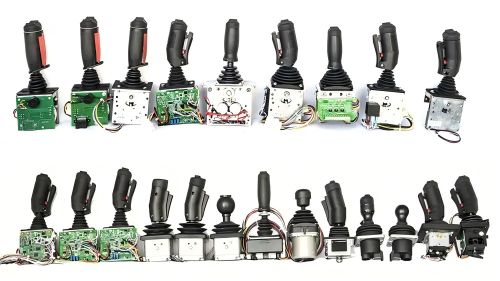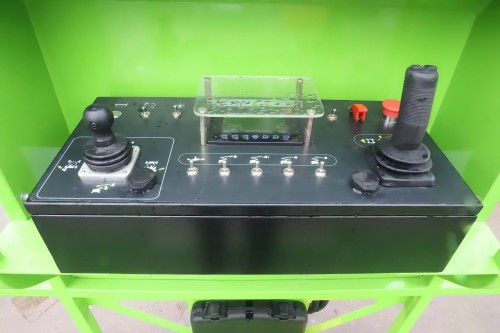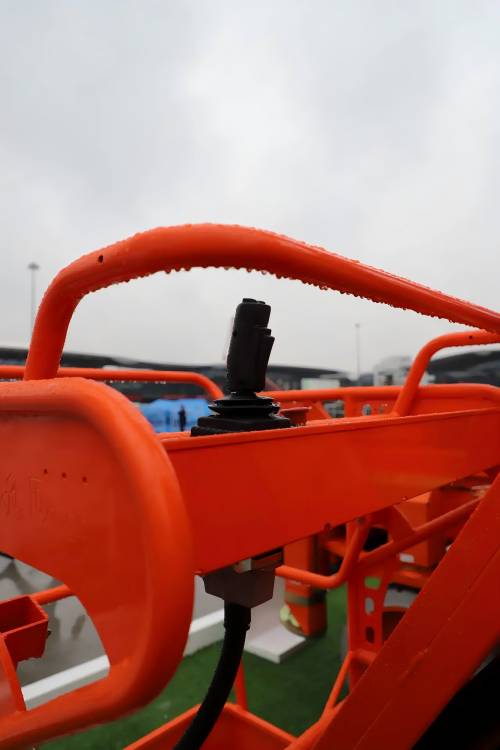工業操縱桿: The Core of Precise Control in Aerial Work Platforms

Introduction Aerial work platforms (AWP) 是現代建築中不可或缺的設備, 維護, 安裝, 及其他領域, 安全性和精確性至關重要的地方. 工業操縱桿作為關鍵控制部件, 功能就像 “神經末梢” 設備的, empowering operators with precise control over complex movements such as elevation and mobility. This article delves into the application, advantages, and development trends of industrial joysticks in AWPs.
Functionality of Industrial Joysticks in Aerial Work Platforms

Elevation Control In AWPs, industrial joysticks leverage precise potentiometers or sensor technology to convert the operator’s hand movements into electrical signals. For instance, a gentle forward push of the joystick sends signals to the platform’s elevation drive system, activating motors that operate hydraulic pumps or lead screw mechanisms to smoothly lift the platform. The joystick’s range of motion correlates proportionally to the platform’s ascent speed, allowing operators to finely adjust the elevation speed based on task requirements, mitigating safety risks associated with excessive speeds.
Horizontal Mobility Control For self-propelled AWPs, the industrial joystick is equally crucial. Tilting the joystick left or right transmits signals to the steering and drive systems of the wheels. By controlling the motors’ rotational direction and speed, the platform can execute turning, forward, and backward movements. In confined spaces or complex worksites, operators can maneuver the platform with precision, ensuring accurate positioning for efficient operations.
Boom Movement Control Certain AWPs are equipped with extendable and rotatable booms. Industrial joysticks independently control actions such as extension, angle adjustment, and rotation. 例如, specific joystick movements can trigger the boom’s hydraulic cylinder or electric actuator to extend or retract. In diverse scenarios, such as streetlight repairs or façade cleaning, operators use joysticks to coordinate multiple boom movements, enabling the platform to reach optimal positions for the task at hand.
Advantages of Industrial Joysticks in Aerial Work Platforms

Enhanced Operational Precision Compared to traditional mechanical controls, industrial joysticks utilize electronic signal transmission, eliminating the gaps and friction inherent in mechanical systems and significantly improving precision. Operators can precisely control elevation height, movement distance, and boom angles with minimal error margins. For instance, during glass façade installations, accurate platform positioning ensures proper alignment, reducing manual adjustments and enhancing efficiency and quality.
Improved Operator Comfort Industrial joysticks are designed with ergonomic principles, offering a comfortable grip and moderate operational resistance. Operators can work for extended periods without experiencing hand fatigue, maintaining focus and precision. Furthermore, their intuitive operation minimizes the learning curve, enabling even inexperienced operators to quickly adapt.
Enhanced System Safety Modern industrial joysticks often include multiple safety features. For instance, zero-position protection ensures that when the joystick is idle, the system automatically locks to prevent accidental movements. 另外, joysticks can integrate with safety sensors on the platform, such as tilt sensors and load sensors. In the event of anomalies, such as excessive tilt or overload, the joystick restricts corresponding actions, safeguarding both personnel and equipment.
Technological Trends in Industrial Joysticks for AWPs
Intelligence and Automation With the advancement of artificial intelligence and automation, industrial joysticks in AWPs are becoming increasingly intelligent. Future joysticks may feature automatic task recognition capabilities, adjusting platform movements based on preset programs and sensor feedback. For instance, in high-wind conditions, the system could automatically reduce elevation speed and boom extension range to enhance stability. Moreover, they may enable synchronized operations with other equipment, such as material handling systems, to boost efficiency.
Advancements in Wireless Control Some AWPs have adopted wireless industrial joysticks, eliminating traditional cables and allowing operators to control the platform from more flexible positions. Future developments in wireless control will focus on enhancing signal stability and resistance to interference while extending operational range. Integration with IoT technology could enable operators to monitor and control AWPs remotely via mobile devices, facilitating remote diagnostics and equipment management to improve maintenance efficiency.
Multi-functional Integration To meet increasingly complex demands, industrial joysticks are evolving towards multifunctional integration. Future joysticks may incorporate additional control buttons and modules, such as lighting control, warning lights, and emergency stop buttons, allowing operators to manage multiple functions from a single interface. Sensors integrated into joysticks could also detect hand movement force and speed in real time, optimizing control algorithms for more personalized and precise operation.
Conclusion As the core control component of AWPs, industrial joysticks play an irreplaceable role in enhancing operational precision, comfort, and safety. With continuous technological advancements, industrial joysticks will evolve toward intelligence, wireless connectivity, and multifunctional integration, delivering superior performance and broader applications for AWPs. In the future, industrial joysticks will empower operators to complete complex tasks more efficiently and safely in the aerial work domain.




